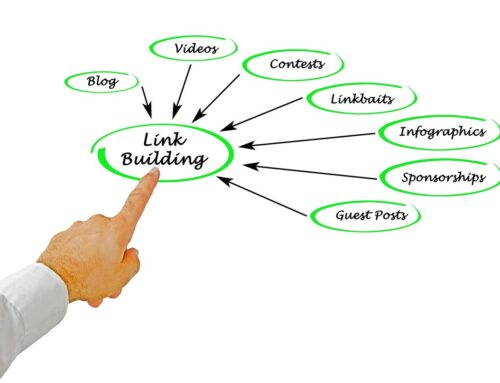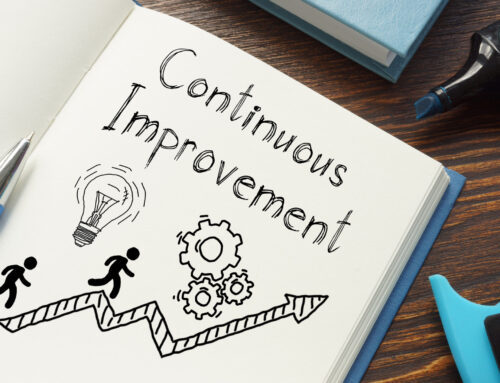According to the National Association of Realtors, 93% of potential buyers look to online websites, making this the most popular information source for homebuyers.
Coupling this with the fact that 75% of users never scroll beyond the first page of Google search results, it has never been more important to not only be online but to be among the top results in that search.
So, how do you land these spots? The answer is search engine optimization.
You've likely heard this ‘SEO' buzzword before, along with a list of generic tips and tricks to make it work for you, but the question remains: How does SEO work?
Before you rabbit hole into the unfamiliar world of complicated coding and technical terms, we've broken down exactly how this marketing technique functions and what you need to know to make it work for your real estate webpage.
What Is SEO?
Search engine optimization, better known as ‘SEO,' is the process of improving a webpage to increase its likelihood of being found on search engines such as Google, Bing, or Yahoo.
This means your webpage's content is optimized for search engines to favor your content and present it to the user as a top result. The obvious benefit of this is that the more a search engine publishes your page as a relevant search result, the more prospective buyers will land on your page.
Because 93% of online experiences begin with a search engine, it's incredibly important for these sites to showcase your website as a relevant result to the searcher's query.
How Does This Work?
For the search engine to deliver the most relevant results to a user, all online content filters through a three-step process.
Crawl, index, and rank.
First, the engine dissects all online material by reviewing every part of a website based on its code and content. This process is called ‘crawling.'
Once your website has been fully crawled, the search engine uses its finding to organize each piece of your site into categories and store it in an index. Now that all of your pages are sorted into the index, they have the opportunity to be found when a user performs a search that your content answers.
When a query occurs, the search engine refers to the index and ranks any content in that category based on relevancy. This ranking is then presented to the searcher in the form of a results page.
Let's break these steps down.
Crawling
The search engine employs millions of little robots called ‘crawlers' or ‘spiders' to find new content online.
Now, unlike the spiders in the basement, you want to allow these spider bots into as much of your content as possible to increase your relevancy. Each spider sets out to find content such as webpages, videos, or images that have not been sorted into the index yet. Once it has discovered your website, the spider then uses links from this page to find additional pages that it will need to sort.
Essentially, this means that for the robots to categorize all of your content, they must be able to follow links to all of your pages clearly.
Index
Each piece of content fits into a category as determined by the crawling bots. From here, the search engine stores this information in the index for quick access later on. Just like opening a filing cabinet, the engine will present information to the user based on what's stored in that category.
This is where we will have problems if the bots don't find the website content or if its subject matter is not clear enough to be filed in the correct category.
Imagine you went hunting for a specific document, and it was in a completely different area or simply not there at all. Google won't search through the rest of the files to find your content; if you aren't in the right file, you won't appear.
Ranking
Google wants to present its user with the answer to their question. To do this, it pulls the information from the index and decides what will be the most relevant based on ranking.
The order of the results on a search engine is anything but random. Each page will be specifically lined up based on their rank.
This is where you will be competing for those top spots. Webpages with a higher ranking will be assumed as more relevant to the search and will appear closer to the top of the search results.
How to Take Advantage
Now that you understand how search engines are coming up with results, you can start identifying where your webpage might be struggling and develop an SEO strategy to utilize this system. As you may have guessed, each stage of the filtering process presents its own set of hurdles to jump over to boost your site's rank.
Let's have a look at some of the most common mistakes and steps you can take to get out in front.
Optimize for Crawlers
As we mentioned earlier, a spider uses the links on your site to discover new pages and content. This means that if your website lacks the necessary links to jump between content, it will be missed and deemed irrelevant.
To increase the amount of relevant information you have stored in the index, you need all of that information to be crawled, so you will need to be sure spiders can find it.
Although there are behind the scenes factors that you may need a website audit to identify, such as codes that block crawling from certain pages or spammy tactics that penalize your site, there are many steps you can take to clear the way for crawling.
Avoid common errors such as hiding information behind login forms or relying on or search bars to navigate your pages. If a user has to log in to access targeted content, Google's little robots will deem this as unhelpful and won't register this content as relevant for search results.
Search bars aren't SEO-friendly if they are the only way to access a link. However, because advanced search options and real estate websites go together like PB&J, we don't want to eliminate them. Be sure also to include links to this content on your landing pages that spiders will be able to find with ease.
Make the navigation of your website clear and complication-free by keeping menu items consistent from page to page. Remember, these are serving as inbound links for spiders to follow.
It's important to maintain menu links between mobile and desktop versions of your site for accessibility as well. This is a great practice not only for SEO but also for your user's ease.
Make Your Category Clear
Let's head back over to the filing cabinet.
Remember, the goal here is to be in the right file when the search engine goes hunting through the index. Although the little sorting bots are incredibly intelligent, it's never a good idea to leave your content's relevancy to chance. This is where you will capitalize on SEO strategies such as local SEO, keywords, building links, SEO blogs, and more.
What are potential buyers typing in when they find you?
Use these keywords in your content, from blog posts to image descriptions. This is the most straightforward way to tell the bots exactly what your content is relating to. To up your game, research your keywords to utilize the most relevant terms to include and understand what competition you have for these specific keywords.
Narrow it Down
Level up your local SEO before going for broad keywords.
Instead of submerging yourself in a sea of broad advice and surface content, focus on your target audience, and get local. When potential buyers launch a search, they are likely to include a specific area in the question they ask.
Take advantage of this by labeling photographs and listings with specifics and even weaving them into other content by mentioning local areas throughout your site. For Example: Instead of using ‘Beautiful Bungalow' in your description, opt for ‘3 Bedroom Bungalow in the Heart of Rosewood West'.
Perfect. Now bump up the relevance by posting a blog such as: ‘The Best Communities for Young Families in (your area)' and mention Rosewood West in the article.
Now you have more relevant content specific to that search and sit higher up in the ranks in a smaller category than towards the bottom of a large, broad topic.
Give Them What They Want
We've established that we want to earn a high rank to be found on that first page of search results, but how exactly is this determined?
Google uses algorithms to organize the relevancy of your content, and although these algorithms do change frequently, there are tried and true methods to appeal to Google's ‘good practice' radar.
Ultimately, search engines want users to find the answer to their questions quickly. In the most favorable formats, it's understandable that as search engines became more familiar with our language, they got pickier about what is and isn't okay.
We've touched on using keywords for relevance in the above section, which is a great strategy for navigating these algorithms; however, there is a fine line between providing clarity and overstuffing.
Google's robots used to be trained to organize content based on how many times the keywords popped up in the article. If they are present more often, that must be more relevant, right?
Unfortunately, practices like these lead to frustrated users trying to find answers and stumbling upon articles overstuffed with keywords, making them difficult to read and often not the most relevant information. While the bots still look for keywords for guidance, overuse of them actually flags the system.
While many other criteria have been introduced to provide a balanced idea of relevancy, most of it ultimately comes down to quality content and various other trusted sites ‘recommending' your site through links.
Stay Out of the Danger Zone
It can be tempting to take shortcuts for quick results with so many tricks to boost search engine optimization and earn those coveted top-rank positions.
These tactics are often referred to as ‘Blackhat.'
The problem with this is that all those little bots have scoured so much information that if they notice things such as duplicate content, overstuffed keywords, or external links to irrelevant content, they will catch it, and you will pay for it.
Perhaps you aren't familiar with how backlinking works and just made a simple mistake. Unfortunately, Google doesn't care if it was a mistake; they will flag this as a penalty, and ultimately, harm your rank.
We understand that your time is valuable, and researching all the ins and outs of optimizing your website is a time-consuming task. If you are finding your site rankings dropping and taking some of these shortcuts to speed up the process, we are sorry to tell you that identifying and reversing these errors will only draw out your timeline even more.
If you are unsure of where you fell into this penalty zone, there's no shame in reaching out for advice from a qualified SEO service.
Pull-Ahead With Search Engine Optimization
Now that you know exactly how search engines are filtering your website, you can go forth with absolute confidence that your search engine optimization game will land you all the leads you need to dominate the real estate market.
Do you still have questions about how to get that top spot, or looking for a little help along the way? Contact us today to find out what SEO can do for you!
Need more local marketing tips? Check out our entire Guide to Local Marketing for Real Estate Professionals






